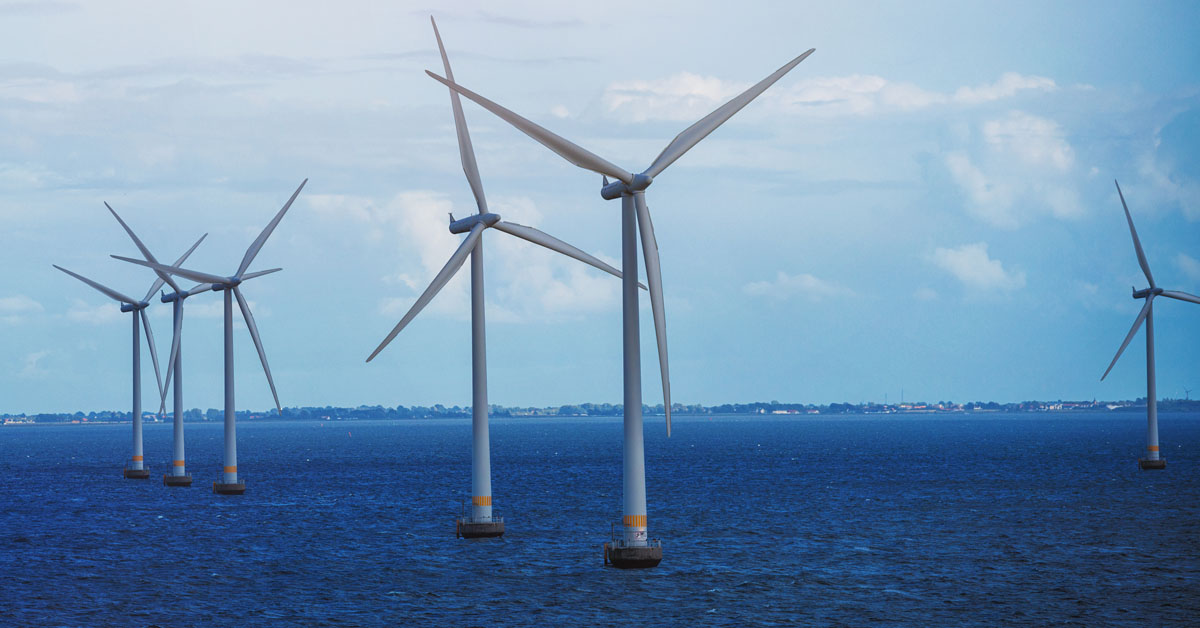Floating offshore wind farms are expanding rapidly due to advantages over their fixed and onshore counterparts. Rather than relying on seabed conditions or space on land, floating farms can access a breadth of wind resources that are not accessible with permanent foundations. For an island nation, this unlocks a huge expanse of potential power. In fact, the UK Government has recently pledged more than £31 million of funding, matched by £30 million of industry funding, for the development of floating offshore wind technologies.
Floating wind farms and their turbines can also be far larger than onshore alternatives, thus able to generate greater megawatt values of energy. Importantly, producing larger volumes of energy enables power to be connected at transmission level, meaning energy companies can move it to generation and demand centres further afield, thus reaching a wider geographical scope. This is more aligned with the way the UK’s network is designed and replicates traditional energy generation methods.
Despite the rapid expansion of floating offshore wind in the UK’s energy mix, the challenges of this type of energy infrastructure cannot be ignored. Installation, operation and maintenance can all be more complex than fixed alternatives.
Monitoring in harsh environments
Control and monitoring of any type of renewable energy site is complex. For fixed offshore infrastructure, this process includes collecting data on wind turbine performance, energy generation volume, equipment wear, plus the analysis of individual components. These facilities typically have several supervisory control and data acquisition (SCADA) systems in place, all communicating into one operational centre.
Floating environments bring more complexity into the equation. Strong winds, waves, currents — plus any consequential platform motion caused by the weather — can result in emergency stops, turbine instability and fatigues to equipment. These environmental changes can also have an impact on vulnerable and moving assets such as dynamic cables, mooring lines and subsea securing points. As such, the need for monitoring increases to include marine-based SCADA systems and cable monitoring systems.
As the number of monitoring systems increases, as does the challenge of obtaining a holistic view of the wind farm and its performance.
Managing multiple datasets
Control and monitoring software for wind farms must be capable of pulling in even more data sets than a traditional system. Crucially, this data must be communicated in a unified way to ensure operators can view all assets at once. In an environment like this, disruption to small assets can have significant consequences. For instance, should a cable gland begin moving out of its tolerances, it could result in damage to the cable or subsea joint box, resulting in downtime and increased maintenance costs.
When choosing software to monitor these facilities, integrators need to consider every single asset that needs to be monitored and select a platform that can work effectively across a range of communication protocols. Likewise, they need a software platform that is sophisticated enough to provide a holistic view of the entire site’s operations. Typically, these sites will need a much larger number of web or RDP clients due to the high volume of stakeholders, adding further complexity.
Scaling for the future of UK energy
Considering the rapid expansion of floating offshore wind in the UK, it is also vital to consider the scalability of software. The Government has ambitious goals to boost the nation’s offshore wind capacity by 25 per cent by 2030, increasing from the current 30GW to 40GW of energy — and floating offshore wind is becoming a key method of reaching this goal.
As well as the creation of new wind farms, existing farms will continue to expand to achieve these goals. For those expanding, it is crucial that control and monitoring software is scalable, in order to keep up with the rapid expansion and increase in assets at these facilities.
According to the Committee on Climate Change, achieving the nation’s legally binding net zero target would require a quadrupling low-carbon electricity capacity and levels of offshore wind deployment of around 75GW by 2050. Floating wind is an crucial component for the UK to meet its these goals — and adequate software will be essential for monitoring and controlling these expansive infrastructures.

